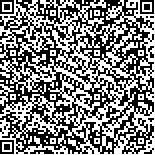| 本文已被:浏览 1156次 下载 1042次 |

码上扫一扫! |
| 学龄前儿童家庭用药安全认知及行为现况研究 |
| 尉耘翠1,聂晓璐1,彭晓霞1,邢梅1,贾露露1,刘亦韦1,张轩1,李明霞2,王晓玲1 |
|
|
| (1. 首都医科大学附属北京儿童医院,北京 100045;2. 中国非处方药物协会,北京 100098) |
|
| 摘要: |
| 目的:了解我国学龄前儿童家庭用药安全认知及行为现状,为指导家庭合理安全用药提供依据。 方法:采用方便抽样方式,在全国随机选择 37 家幼儿园,由专业药师入园调查,对研究结果进行描述性分析。 结果:共回收样本 3 276 份,结果显示79.24%的学龄前儿童近半年内曾经生病,其中 94.18% 使用药物治疗;儿童家庭用药不规范行为主要包括随意停药(51.80%)、不经常阅读说明书(19.17%)、使用成人药物(8.55%)、不经常核对药名及有效期(7.33%)、送服方式欠佳(4.12%)等。 家长参加药物不良反应宣教率较低(26.62%);7.42% 的被访家庭发生过经医师确诊的药物不良反应,另有6.84%的家庭发生过未经医师确诊的药物不良反应,96.70%的家长支持建立家长配合上报的儿童不良反应监测系统;家长对儿童用药关注度非常高(78.17%),获取用药知识的主要途径是医师、药师及护师的指导(76.35%)。 结论:我国学龄前儿童家庭不规范用药行为仍较多,但家长对儿童用药安全关注度普遍较高。 未来应充分发挥儿科药师的药学服务能力,开展广泛、系统、规范的儿童用药安全宣传、教育和培训,同时可建立家长配合上报的儿童不良反应监测系统,进一步保障儿童用药安全。 |
| 关键词: 学龄前儿童 家庭用药 认知 行为 现况研究 |
| DOI:10.13407/j.cnki.jpp.1672-108X.2018.05.012 |
|
| 基金项目:中国-世界卫生组织 2014-2015 双年度合作项目,编号 WPCHN1408195,5.1,61775;国家卫计委药政司委托课题,编号药政[2016]25 号。 |
|
| Cross-Sectional Study of Cognition and Behavior of Family Medication Safety in Preschool Children |
| Yu Yuncui 1 , Nie Xiaolu 1 , Peng Xiaoxia 1 , Xing Mei 1 , Jia Lulu 1 , Liu Yiwei 1 , Zhang Xuan 1 , Li Mingxia 2 , Wang
Xiaoling 1 |
| (1. Beijing Children's Hospital, Capital Medical University, Beijing 100045, China; 2. China Nonprescription Medicine Association, Beijing 100098, China) |
| Abstract: |
| Objective: To investigate the cognition and behavior of family medication safety in preschool children in China and provide
rationalized suggestions. Methods: The convenient sampling survey was performed in 37 kindergartens by professional pharmacists in
China. Descriptive analysis was conducted on the survey results. Results: A total of 3,276 completed samples were collected. The
results showed that 79. 24% of preschool children got sick in the past six months, of which 94. 18% had drug intervention. The irregular medication for preschool children were mainly the mistakenly withdraw (51.80%), seldom reading the instructions (19.17%), use the adult medicine (8.55%), neglect for drug name and validity checking(7.33%), poor dosing schedules (4.12%) and so on.
Meanwhile, the rate of parents joining in the adverse drug reactions mission was low (26.62%). 7.42% of the children had occurred
adverse drug reactions with doctors爷 diagnosis, and still 6.84% of them had occurred adverse drug reactions without diagnosis. Parents had a high degree of acceptance on carrying out the drug adverse events monitoring system establishment based on parental reports (96.70%). In addition, parents were very concerned about the medication safety (78.17%), and the main way to obtain related
knowledge was the guidance from doctors, pharmacists and nurses (76.35%). Conclusion: In China, increasing parents pay more
attention to the safety and efficiency of the medicine, but the inappropriate medication for preschool children is still common. It is necessary to improve the pharmaceutical service of pediatric pharmacists and to carry out more systematic and standardized education and training about children medication. In addition, we can also try to establish the drug adverse events monitoring system based on parental reports to insure medication safety in the future. |
| Key words: preschool children family medication cognition behavior cross-sectional study |